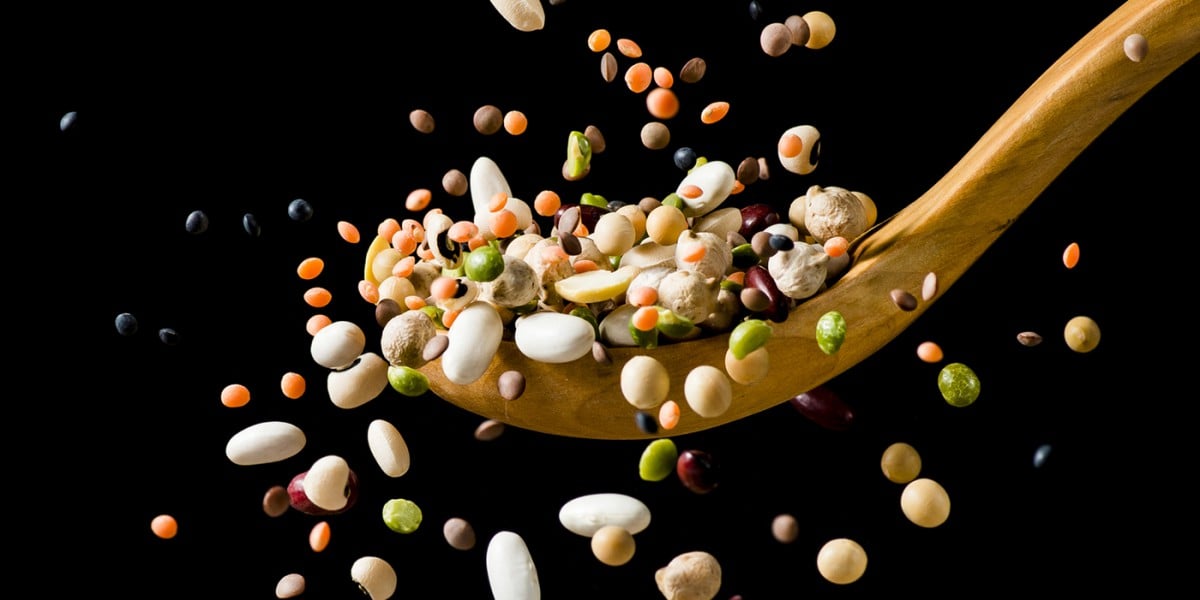How to turn plants into plant-based meat

At our most recent GFIdeas meeting, food entrepreneurs tuned in for a deep dive on turning plants into plant-based meat. Just what does it take to create the gristly texture of shredded beef brisket or tender mouthfeel of chicken strips starting with raw plants?
Brian Plattner, Director of Process Technology at Wenger Manufacturing and an expert in plant-based meat extrusion, joined the call to break down the fascinating science behind creating plant-based meat. In case you missed it, we are here to walk you through Brian’s industry insights.
Pick your plants
The first step is deciding what ingredients to use. Most plant protein ingredients come as either a concentrate or an isolate. A concentrate is typically made by removing much of the carbohydrate, fat, and fiber from the plant ingredient. Isolates are even more concentrated (or should we say isolated?) and contain high protein levels of around 85 to 90 percent. Concentrates and isolates can come in many forms with different functions depending on the processes used to create them.
With this in mind, here are some of Brian’s tips for picking the right plants:
- Soy can be used to create a variety of flavors and textures. Soy concentrate is best for a layered texture, whereas soy isolate works better for products with lots of thin fibers.
- Wheat is ideal for fish or chicken because of its fibrous texture. This ingredient, however, can be a problem for gluten-intolerant consumers.
- Pea proteins create a softer texture than soy and wheat. Pea concentrates are less expensive than isolates, but their higher carbohydrate content can make achieving a meat texture more challenging. Pea isolate creates a meatier texture.
- Beans such as chickpeas, lentils, fava beans, and navy beans are typically used in combination with other plants because they are very soft and don’t texturize alone. They also tend to make the final food product a darker color.
- Mycoproteins (aka proteins from mushrooms and other fungi) also work well when combined with other ingredients and can lead to unique textures. And they contain tons of nutrients!
There is a whole world of unexplored plant proteins, some of which may make great plant-based meat! Find out more about neglected or underutilized crops here.
Make them meaty
Once you’ve picked the perfect plants, the next step is running the raw ingredients through an extruder, a machine that reshapes plant protein structure using high temperatures, moisture, and mechanical force. This process changes the ingredients at the molecular level by stretching out, realigning, and then cross-linking proteins to give the end product a consistent, meaty texture without altering their nutritional benefit.
After extrusion, cut, shape, and season your plant protein however you like. (Strips, shreds, or slices? Teriyaki, jerk, or barbecue?) Voila! You have made plant-based meat.
Learn more
Are you an entrepreneur interested in creating a better food future? Are you building the next breakout company in the plant-based or clean meat industry? Join GFIdeas for insights on the latest technology, tips from industry incumbents, and support from the good food entrepreneur community!

